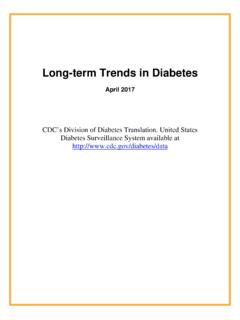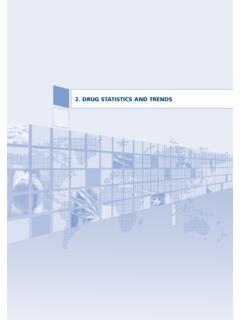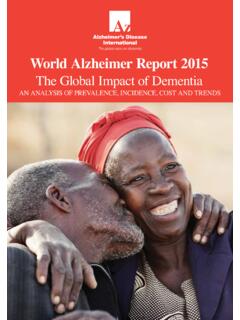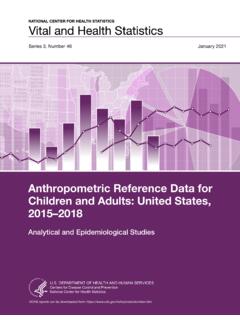Transcription of THE EPIDEMIOLOGY AND IMPACT OF DEMENTIA - WHO
1 WHO/MSD/ 01 KEY MESSAGES DEMENTIA is a global epidemic whilst many cases have been recorded in the world s richest and most aged countries, already the clear majority (63%) of people living with DEMENTIA live in low- and middle-income countries (LAMIC) where access to social protection, services, support and care are very limited. The future scale of the DEMENTIA epidemic may be blunted through improvements in population health; our best current estimates suggest that around 10-20% of incidence may be avoided. The success of initiatives to reduce risk factors of DEMENTIA , such as increasing education, needs to be monitored through population-based research programmes.
2 These should focus upon evolving care arrangements, and access to and coverage of health and social care interventions. There is an urgent need to develop cost-effective packages of medical and social care that meet the needs of people living with DEMENTIA and their caregivers across the course of the illness, along with evidence-based prevention strategies. Only by investing now in research and cost-effective approaches to care can future societal costs be anticipated and prevalence OF DEMENTIA WORLDWIDEThe number of people living with DEMENTIA worldwide in 2015 was estimated at million, reaching million in 2030 and million in 2050 (1).
3 The numbers reported here are higher than the original estimates reported in the 2009 World Alzheimer Report as the regional prevalence of DEMENTIA estimated from studies in China and sub-Saharan Africa were substantially higher than those used in the 2009 World Alzheimer Report (1). When age-standardised to a standard western European population, the prevalence for East Asia increased from to and in the sub-Saharan African regions from a range of to , to The net effect, as more data becomes available, is to further reduce the variation in prevalence between world ageing is the main driver of projected increases.
4 Since population ageing is occurring at an unprecedentedly fast rate in low- and, particularly, middle-income countries, the bulk of the increase in numbers through to 2050 will occur in those regions. From 2015 to 2050, numbers of people living with DEMENTIA will have increased slightly less than twofold in Europe, somewhat more than twofold in north America, threefold in Asia, and fourfold in Latin America and Africa. While 37% of the people living with DEMENTIA live in high-income countries, 63% live in low and middle-income countries. For more detailed information, see Appendices 1 and INCIDENCE OF DEMENTIA WORLDWIDE The incidence of DEMENTIA increased exponentially with increasing age, based on the available estimates for the global incidence of DEMENTIA dating from 2010 (2).
5 For all studies combined, the incidence of DEMENTIA doubled with every year increase in age, from 1000 person years at age 60-64, to 1000 person years at age 95+ (see Figure 1). While the incidence of DEMENTIA appeared to be higher in countries with high-incomes than in low- or middle-income countries, this was largely an artifact, due to the specific diagnostic criteria used. THE EPIDEMIOLOGY AND IMPACT OF DEMENTIACUR R ENT STATE AND FUTURE WHO/MSD/ 02 Worldwide million new cases of DEMENTIA were anticipated each year, implying one new case every seconds. This means that there were million (46%) new cases per year in Asia, million (31%) in Europe, million (16%) in the Americas, and million (7%) in Africa.
6 Numbers of new cases increased and then declined with increasing age in each region; in Europe and the Americas peak incidence is among those aged 80-89 years, in Asia it is among those aged 75-84, and in Africa among those aged 70-79 (Table 1). For the year 2010, prevalence ( million cases) is times annual incidence, suggesting an approximate average survival from the onset of DEMENTIA till death of group (years)Total60 6465 6970 7475 7980 8485 8990 + 6 8 TABLE 1 Estimated annual numbers of incident cases of DEMENTIA , by age group and world region05010015020025095+90 9485 8980 8475 7970 7465 6960 64 Latin AmericaLow- and middle-income countriesNorth AmericaEuropeHigh-income countriesIncidence/1000 person-yearsAge group (years)FIGURE 1.
7 Meta-analysed estimates of the incidence of DEMENTIA by world region/ development status (2)THE EPIDEMIOLOGY AND IMPACT OF DEMENTIA : CURRENT STATE AND FUTURE WHO/MSD/ 03 Direct socialDirect medicalInformal care0%20%40%60%80%100% .1% 7. 6 % income countriesLower middle- income countriesUpper middle- income countriesHigh- income countriesFIGURE 2. Distribution of global societal costs of DEMENTIA , by country income status. FUTURE trends IN THE prevalence ANDINCIDENCE OF DEMENTIA All current projections of the scale of the coming DEMENTIA epidemic assume that the age- and gender-specific prevalence of DEMENTIA will not vary over time, and that the increasing number of older people at risk drives the projected increases.
8 However, the basis for this assumption is uncertain, since prevalence is a product of incidence and survival with DEMENTIA , and a fall in either or both of these indicators would lead to a fall in age-specific prevalence (3). A decline in age-specific incidence, at least in high-income countries, is theoretically possible, driven by changes in exposure to suspected developmental, lifestyle and cardiovascular risk factors for DEMENTIA . The strongest evidence for possible causal associations with DEMENTIA (plausible, consistent, strong associations, relatively free of bias and confounding) are those of low education in early life, hypertension in midlife, and smoking and diabetes across the life course.
9 In a recent modelling exercise, it was concluded that a 10% reduction of key risk exposures would lead to an reduction in the prevalence of DEMENTIA through to 2050, with a reduction in prevalence of DEMENTIA anticipated assuming a 20% reduction in exposure prevalence (4). THE IMPACT OF DEMENTIAD ementia and cognitive impairment are the leading chronic disease contributors to disability, and, particularly, dependence among older people worldwide. While older people can often cope well, and remain reasonably independent even with marked physical disability, the onset of cognitive impairment quickly compromises their ability to carry out complex but essential tasks in daily life.
10 In addition, people living with DEMENTIA will increasingly have difficulty to meet their basic personal care needs (5). The need for support from a caregiver often starts early in the DEMENTIA journey, intensifies as the illness progresses over time, and continues until death. There is a large literature attesting to the extent of the strain that caregivers experience, which is practical (hours spent caregiving detracting from other activities, particularly leisure and socializing), psychological (emotional strain, leading to a high prevalence of anxiety and depression), and economic (increased costs, coupled with giving up or cutting back on work to care) (5).















